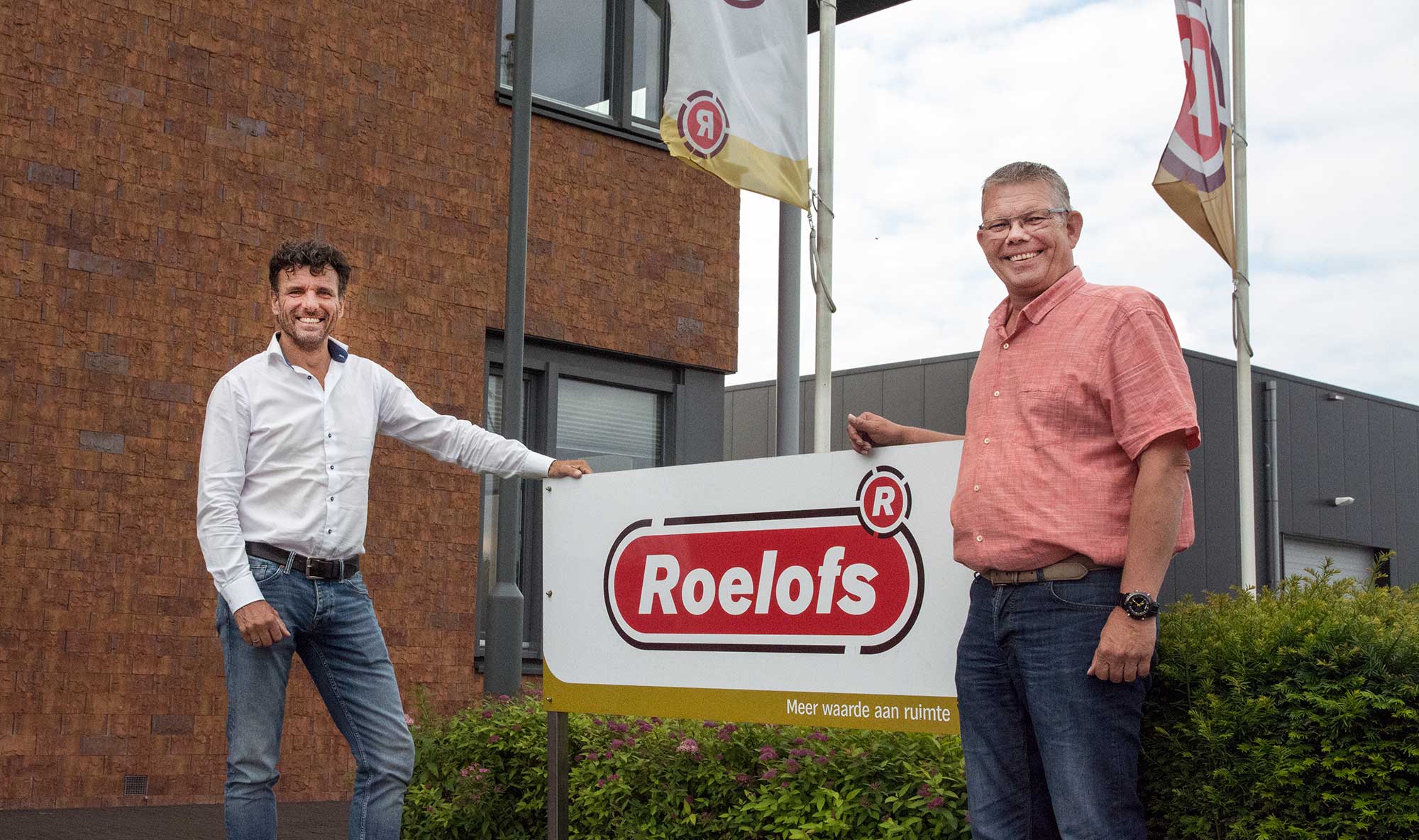And yet things are slowly starting to change. A new future is emerging for ‘green’ asphalt: roads that have replaced fossil oil and chemicals with vegetable and circular raw materials. Thanks in part to biobased chemistry, the greening of road construction is forging ahead. And the field of green chemistry is precisely the area of expertise of Chemport Europe in the north of the Netherlands.
Binders from trees
One of the most interesting innovations at present is the replacement of petroleum-based bitumen with organic lignin. Lignin is the ‘glue’ that holds plant fibres together in woody plants and can fulfil the same function in asphalt. Dozens of organisations throughout the road construction chain, from raw material producers and road builders to road operators, are researching the application of lignin as part of the CHAPLIN programme.
Roelofs, a company in Stadskanaal in the Northern Netherlands, was one of the parties involved in this project from the start. A few weeks ago, the company laid a test section of the provincial road in Siddeburen with lignin-containing asphalt, near the location of green chemical company Avantium in the Delfzijl Chemical Park.
Marco Kok, Asphalt & Technology manager at Roelofs: ‘We have been working on circularity in road construction for a long time with the reuse of asphalt. We see that bitumen is becoming increasingly scarce and of lower quality. This, in combination with the need to reduce CO2 emissions, led us to start recycling. Even bitumen from old roofing material or milled asphalt (debris from worn road surfaces being replaced, ed.) is often of better quality than new bitumen. However, for a more sustainable solution, we are looking for an alternative, preferably a 100% biobased replacement.’
Lignin is a good candidate for this, as it occurs abundantly in nature and often remains as a residual product in biorefinery processes. And this is the case at Avantium, for example, which built a pilot plant for its DAWN Technology in Delfzijl. ‘This technology is used to extract industrial sugars from wood waste from nature reserves managed by Staatsbosbeheer. These sugars are used as a building block for chemical technology, for producing biobased plastics, for example, like PEF,’ explains Avantium spokesperson Caroline van Reedt Dordtland. ‘The lignin that remains can be used in the RWE power plant, for example, to generate energy. But it can also be used for more beneficial applications, such as for replacing bitumen in asphalt. That is an interesting target market for us, partly because of its large size.’
The wood chips are always screened as an initial step in the production process. ‘We sometimes come across an occasional pine cone, but the quality is consistent enough for our process to produce industrial sugars for the chemical industry and lignin for bioasphalt.’
Increasingly cheaper
The quantities of lignin produced in the Avantium pilot plant are still relatively small. But this can change if the company builds a commercial DAWN factory in the future. In addition, lignin is also becoming available from other sources, such as from elephant grass, which the contractor NTP uses to make ‘Grasfalt’, and as a residual product from Scandinavian pulp and paper factories used by road builder H4A. As availability increases, the raw material may also become cheaper.
Thanks to the ECI methodology that the government employs with large tenders, a biobased product can also quickly become more attractive than a cheaper, but less sustainable, fossil-based solution. ECI stands for Environmental Cost Indicator and unites relevant environmental impacts into a single score of environmental costs: on paper, a smaller environmental impact means lower costs.
And, in this case, sustainability is certainly not an issue. The raw material is not only renewable and a residual product, but it also requires less energy to produce bioasphalt, because this can be done at lower production temperatures. It saves a lot of natural gas in the asphalt production plant, which in time may even be electrified.
‘Currently, we are still in the testing phase,’ says asphalt specialist Albertus Steenbergen at Roelofs, which is collaborating on innovation with about ten road builders and shares lab facilities at the Asphalt Knowledge Centre (AKC). ‘Lignin in the asphalt plant behaves differently than in the lab. How does it mix, how do you transport it, how do you transfer it properly into the asphalt machine and how does it behave in practice? That is what we are currently investigating by laying test sections throughout the country.’
Test sections
Has anything been revealed from the tests so far? ‘Seven years ago, H4A laid the first test section in Zeeland: the access road to their own asphalt plant. It is still in good condition. Roelofs also laid cycle paths in Wageningen five years ago using various types of lignin at higher percentages. These, too, are holding up well. Now we are testing several provincial and industrial roads that are subject to higher loads. But we have also tested the application of lignin in various layers: first only the surface layer, then the intermediate and bottom layers, with and without PR (partial recycling, ed.). Each layer has its own properties.’
It is looking increasingly likely that we will be driving on bioasphalt roads sooner or later. Albertus Steenbergen: ‘Current technology enables us to replace up to 50% of the bitumen with lignin. But I am convinced that it will be possible to make bitumen-free asphalt within the next five years. We believe in a biobased solution.’
Clients like the provincial and municipal authorities are clearly open to the idea. This means that one important hurdle has already cleared, according to Marco Kok, commercial manager at Roelofs: ‘The province of Groningen was very eager to designate a location. And the municipality of Groningen and Groningen Seaports are also working with us. So there is sufficient support. This is because, as road operators, they also recognise the necessity to find alternatives to fossil bitumen, even though there may be risks involved with new technology. By working together, we can absorb the risks and make it all feasible.’
Theme: Sustainable Road Construction 2021
- Asphalt is getting ever greener
- Low temperature asphalt made with linseed oil
- Cellulose as a green asphalt additive
- Asphalt with olivine eats tonnes of CO2
These articles were created in collaboration with Chemport Europe.
Image above: Ronny Benjamins/Avantium

 Parties from the entire asphalt value chain are collaborating in the CHAPLIN programme, including suppliers of raw material, road builders, road operators/government organisations and knowledge institutions: the Directorate-General for Public Works and Water Management (Rijkswaterstaat), the provinces of South Holland, North Brabant, Zeeland, Gelderland, the municipalities of Bergen op Zoom and Wageningen, Dura Vermeer, H4A, NTP, Latexfalt, Roelofs Groep, Vertoro, Avantium, Praj, Boskalis, Utrecht University, Wageningen Food & Biobased Research, the Netherlands Organisation for Applied Scientific Research (TNO), Q8 Research and the Asphalt Knowledge Centre (AKC).
Parties from the entire asphalt value chain are collaborating in the CHAPLIN programme, including suppliers of raw material, road builders, road operators/government organisations and knowledge institutions: the Directorate-General for Public Works and Water Management (Rijkswaterstaat), the provinces of South Holland, North Brabant, Zeeland, Gelderland, the municipalities of Bergen op Zoom and Wageningen, Dura Vermeer, H4A, NTP, Latexfalt, Roelofs Groep, Vertoro, Avantium, Praj, Boskalis, Utrecht University, Wageningen Food & Biobased Research, the Netherlands Organisation for Applied Scientific Research (TNO), Q8 Research and the Asphalt Knowledge Centre (AKC).  Avantium, originally an Amsterdam-based company, feels completely at home in the Northern Netherlands. Spokesperson Caroline van Reedt: “Chemport Europe has expressed the ambition to become a leader in the field of green chemistry and reducing CO2 emissions. It supports a circular economy without fossil raw materials. These are not just words; you can also see it in their actions. The entire Chemport Europe network is focused on green chemistry, our core business. They have also supported us in obtaining subsidies for several technologies. We also consider it very important that we have access to a sea port from Delfzijl and that there is a lot of good labour in the Northern provinces. The Province of Groningen has also shown its willingness to roll up its sleeves. For example, the test section with lignin-containing asphalt was made possible by the province. That certainly shows ambition!
Avantium, originally an Amsterdam-based company, feels completely at home in the Northern Netherlands. Spokesperson Caroline van Reedt: “Chemport Europe has expressed the ambition to become a leader in the field of green chemistry and reducing CO2 emissions. It supports a circular economy without fossil raw materials. These are not just words; you can also see it in their actions. The entire Chemport Europe network is focused on green chemistry, our core business. They have also supported us in obtaining subsidies for several technologies. We also consider it very important that we have access to a sea port from Delfzijl and that there is a lot of good labour in the Northern provinces. The Province of Groningen has also shown its willingness to roll up its sleeves. For example, the test section with lignin-containing asphalt was made possible by the province. That certainly shows ambition! It will take some time before bioasphalt is fully marketable or is even stipulated by clients in the specifications. Recycling old asphalt has been used for some time. Now, there is another possibility: the reclamation of bitumen from old roofing material. Roelofs is working on this as part of the
It will take some time before bioasphalt is fully marketable or is even stipulated by clients in the specifications. Recycling old asphalt has been used for some time. Now, there is another possibility: the reclamation of bitumen from old roofing material. Roelofs is working on this as part of the 


